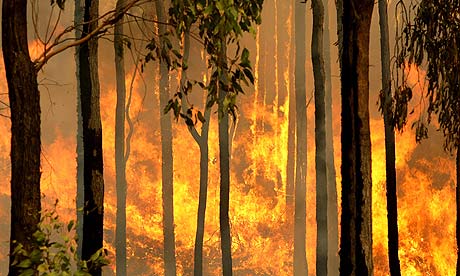Australian bushfires: when two degrees is the difference between life and death
Scientist Tim Flannery recalls the long, wet Victorian winters now replaced by a drier and dangerous climate 
by Tim Flannery The day after the great fire burned through central Victoria, I drove from Sydney to Melbourne. For much of the way – indeed for hundreds of miles north of the scorched ground – smoke obscured the horizon, entering my air conditioned car and carrying with it that distinctive scent so strongly signifying death, or to Aboriginal people, cleansing. It was as if a great cremation had taken place. I didn’t know then how many people had died in their cars and homes, or while fleeing the flames, but by the time I reached the scorched ground just north of Melbourne, the dreadful news was trickling in. At first I heard that 70 people had died, then 108. Then 170. While the precise number of victims is yet to be ascertained, the overall situation at least is now clear. Australia has suffered its worst recorded peacetime loss of life. And the trauma will be with us forever. I was born in Victoria, and over five decades I’ve watched as the state has changed. The long, wet and cold winters that seemed so insufferable to me as a young boy wishing to play outside vanished decades ago, and for the past 12 years a new, drier climate has established itself. I could measure its progress whenever I flew into Melbourne airport. Over the years the farm dams under the flight path filled ever less frequently, while the suburbs crept ever further into the countryside, their swimming pools seemingly oblivious to the great drying. … When he ratified the Kyoto protocol, Australia’s prime minister Kevin Rudd called climate change the greatest threat facing humanity. Shaken, and clearly a man who has seen things none of us should see, he has now had the eye-witness proof of his words. We can only hope now that Australia’s climate policy, which is weak, is significantly strengthened.
Australian bushfires: when two degrees is the difference between life and death